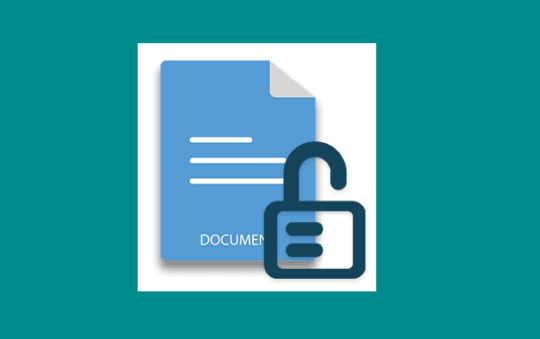Looking for how to take a screenshot on a mac? Screenshots are convenient and a handy tool at that.
They are a quick and easy way to capture exactly what you’re seeing on your computer screen to show your work in progress, share images with your friends, notes for reference later, etc
If you recently switched from Windows to Mac, you will quickly notice that taking a screenshot on Mac isn’t simple and straight forward as Prt Scrn (Print Screen) button on Windows but is as easy as on a PC especially if you know the keyboard shortcuts to do so.
There are a number of keyboard commands and apps in macOS® you can use to capture your screen in Mac OS X.
Here’s a simple and easy guide to taking screenshots on your Mac:
Depend on your setup, the screenshot capture on Mac may vary slightly since there’s not any specific dedicated keyboard button for print screen on Apple products.
Post-Mojave Mac Command Method
A default screenshot app comes with the latest macOS Current versions (Mojave and Catalina) that can be accessed by pressing Shift-Command (⌘)-5.
After you hit this command ⌘ + Shift + 5, an onscreen screen capture menu will appear that will allow you to:
- Capture a still image of your screen.
- Recording the entire screen.
- Record a selected portion of the screen.
- Capture Selected Window(s).
Record the entire Screen
- Press Shift-Command (⌘)-5 on your keyboard and on the onscreen controls, click on the fourth icon from the left.
- Your pointer will automatically change to a camera.
- Now, Click on any part of the screen to start recording.
- To stop the recording, press Command-Control-Esc.
Record a selected Area of the Screen
- Press Shift-Command (⌘)-5 and click on the first camera-like icon from the right in the onscreen controls.
- Drag with the mouse cursor to select an area of the screen to record.
- Click Record in the onscreen controls to start recording and press Command-Control-Esc to stop the recording.
Pre-Mojave Mac Screenshot
If you still haven’t upgraded to Mojave or Catalina, i would recommend you do so. But for the moment, you can use these screenshot command methods.
- Command-Shift-4 – Use this command to capture a portion of the screen. A cross-hair cursor will pop-up for you to click and drag to select the outline of the area you want to capture. After you release the mouse button, the screenshot will be saved automatically on your desktop as a PNG file.
To copy a portion of the screen to the clipboard, simply press the Shortcut Command-Control-Shift-4. Drag and select the area with the cross-hair to capture. Click on the mouse to save the screenshot to the clipboard.
Related read: 10 Simple Ways on How To Take Screenshots in Windows 10
Launch the application where you want to insert the screenshot image and press Command+V.
- Shift-Command-3 – Press this command to capture the entire screen and saved a screenshot as a PNG file automatically on your device. This command will also place your screenshot on your clipboard for you to paste into another editing program like Adobe, PowerPoint, Photoshop, etc.
Third-Party Screenshot Apps for macOS
You can use the above Command methods to capture a simple screenshot on your Mac but it requires third-party apps to offer extra features – annotation, conversion to GIF, password encryption. etc.
Here are a few of the Best Screenshot Apps for macOS
- CloudApp – record videos, annotate screenshots, create GIFs, capture your screen and share it instantly to the cloud.
- Snappy – Clip stuff from your screen, supports annotation, password encryption, unique URL to send around, etc.
- Skitch – Support annotation, shapes, and sketches. Includes arrows, lines, shapes, highlights, and pixelation.
- Lighshot – I personally use LightShot because it’s easy to use, quick, and super simple. Simply select an area, and either save it on your device or click “Upload” to create a shareable link.
How to choose a save location for Screenshots
Depending on the type of screenshot and work related, you can set up and choose different file locations for the screenshot to be saved.
Here are the steps to set a pre-save location:
- Use this shortcut to bring up the screenshot toolbar “Command + Shift + 5”
- Next, select the Options menu.
- Click on Desktop, Documents, Clipboard, Mail, Messages, or Preview under Save to pre-select a location.
How to show the mouse pointer in screenshots on Mac
- Use Command + Shift + 5 and bring up the screenshot toolbar.
- Select Options.
- Click on Show Mouse Pointer.
How to set a timer for screenshots and screen recordings
- Bring up the screenshot toolbar via Command + Shift + 5
- Tap Options.
- Under Timer, choose from any one of the following – None, 5 Seconds, or 10 Seconds to set a screenshots or screen recording timer.
How to edit a screenshot on Mac
- Take a screenshot and save it directly on your desktop.
- Right-click on your screenshot image file and select “Open With.” Select either Keynote or Apple Preview which both of them usually come standard on your Mac.
- Keynote allows you to add a shadow, reflection, tables, chart, slides, images, shapes, etc.
- With Apple Preview, you can add shapes, incorporate texts, Annotate an image, Extract an image, or remove a background, Apply a color profile, Resize, rotate or flip an image.
How to edit a screen recording on Mac
After you stop recording, on the lower-right corner of your screen, a thumbnail of the screen recording will appear briefly.
- Right-click on the thumbnail and select Markup.
- From the top-right corner of the Quick Look window, select the trim button.
- To trim, select the hold points from the recording’s timeline, and adjust their length and position.
- Once finished, click done.
QuickTime video on a Mac
You can also edit your screen recording with QuickTime video application which comes pre-installed in most MAC computers.
- Open the QuickTime application.
- Click File < Open File, and select the video you want to edit.
- Next, select Edit < Trim
- Grab the hold handles to adjust the beginning and end handles part to trim and save the recording part you want to save.
- Once you have cut out the area you wanna remove and isolate the parts to be saved, Click Trim.
- Once done, Save or Export your trimmed video in a .mov or m4v (mpeg4) file.
Final Words
Each of the main OS whether it be Windows, macOS, Android or iOS, each of them incorporates one or more ways to take screenshots.
Hope these methods help you to capture your MacBook’s screen.


